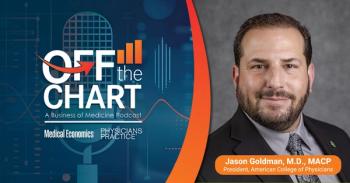
The effects of nurse practitioners replacing physicians
Unsupervised non-physician providers put patients at risk when working outside their scope of practice.
Across the country, corporations and government agencies are replacing physicians with nurse practitioners (NPs). While these entities argue that they have been forced to hire nurse practitioners due to a supposed physician shortage, the truth is that physicians are being systematically fired and replaced by lesser qualified clinicians on the basis of profit. This short-sighted trend is dangerous for several reasons.
Lack of informed consent and patient choice
Patients are inherently vulnerable and have little choice but to place their trust in the treating medical team. Most Americans trust the training of physicians, and report that they prefer to be
Trending:
With the increasing replacement of physicians by non-physician practitioners, some of the most vulnerable patients are losing the opportunity see a physician-or may be unaware that the caregiver is not a physician. For example, federally-funded rural health clinics treating socioeconomically disadvantaged patients are
Rationing health care by restricting access to physicians and substituting lesser trained practitioners is very much a question of social justice. This is particularly poignant considering brand-new revelations that that medical algorithms-treatment guidelines followed NPs-may be
Patient harm
Although advocates claim that studies show that NPs can provide comparable care to physicians, they fail to acknowledge that this research has always been done with supervised NPs. The truth is that there are absolutely no studies that show nurse practitioner safety and efficacy when practicing independently.
Moreover, most of the studies that purport to show NP safety have been of
Read More:
In fact, newer studies have revealed concerning gaps in the quality of care of some nurse practitioners, including
Strained by the demand for more graduates, training programs for NPs are accepting less qualified applicants and
Mary Mundinger DrPh, a nurse practitioner researcher, has also called NP training programs into question, pointing out that only 15 percent of all
Lack of repercussions for quality of care issues
Despite legislation allowing unsupervised nurse practitioners the right to to provide medical care to patients,
NPs answer to their individual board of nursing, rather than the board of medicine. There are questions regarding the ability of these nursing boards to safely oversee nurse practitioners, with examples of patient harm being ignored by
Trending:
Organizations are not being held responsible when they hire nurse practitioners to work outside of their scope of training. For example, the most common type of NP is a family nurse practitioner, trained to work in an out-patient setting. NPs who wish to work in a higher acuity setting such as a hospital must complete an acute care program. Because of the confusion even within the nursing system regarding the types of NP certifications-there are
When any medical provider-physician, nurse practitioners or physician assistant-works outside the scope of their education and training, patients are at risk. By treating physicians and nurse practitioners as interchangeable, organizations are following a dangerous path that will ultimately lead to patient harm.
Newsletter
Optimize your practice with the Physicians Practice newsletter, offering management pearls, leadership tips, and business strategies tailored for practice administrators and physicians of any specialty.










